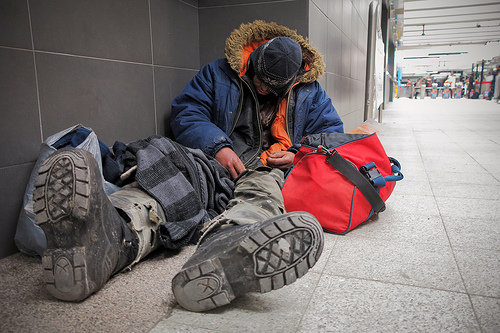
Homelessness Increases Dramatically in Seattle Area
Number of people sleeping outside up 20 percent
Homeless shelters in Seattle, one of the nation’s wealthiest cities, turn people away each night. Wait lists for low-income housing are years-long. Cars and tents serving as makeshift homes can be spotted all over Seattle and the rest of King County.
According to an NPR report, more than a million Americans across the country wound up in homeless shelters in 2013, according to the latest numbers from the Obama administration.
Homelessness remains widespread, but government agencies claim it has been decreasing in recent years. However, that’s not the case in Seattle, which has seen its ranks of homeless surge over the past decade. More people are now homeless in Seattle than anywhere except New York City, Los Angeles, or Las Vegas. (AGRM will hold its 2015 annual convention just across Lake Washington from Seattle, in Bellevue, which is also in King County.) According to the latest count, in January, more than 3,700 people live on the streets of King County. The number of people sleeping outside shot up by 20 percent in just the past year.
Ask the homeless here, and they’ll give some reasons for the upward trend. Aaron McPhatter says he is homeless because he lost his job. He and his girlfriend have been staying at shelters in downtown Seattle for about five months. Affordable housing is a big problem, says homeless veteran Gary Eyerly. And medical problems push others out of their homes. Jonathan Murrell says his life spiraled out of control after he broke his neck in a car accident.
The area’s liberal voters and politicians don’t mind spending money on social problems—and there’s a lot of money here. “In a community like ours, we shouldn’t have thousands of people that are homeless,” says Vince Matulionis, United Way of King County’s director of ending homelessness.
All told, under a 10-year plan put together a decade ago by a public-private partnership called the Committee to End Homelessness, roughly $1 billion has gone to the cause.
Leaders of the committee point to an economy that is generating both wealth and poverty in large amounts. More housing has been built for the homeless in Seattle than anywhere except New York or LA. Yet the effort is losing ground.
So why are things getting worse in Seattle when they aren’t nationally?
One reason, according to Matulionis: The 10-year plan didn’t focus enough on root causes, like the lack of affordable housing in this booming metropolis.
“Seattle was the fastest-growing city in the country last year,” he says. “So, rich, poor, and otherwise, we attract a lot of people here. A lot of people get here and find that they struggle with the cost of living and the cost of housing.”
The 10-year plan focused on providing permanent homes for the homeless rather than shelter beds. But even low-income housing is expensive and slow to build. The county wound up with even more people lacking shelter of any kind.
The committee has been working to revise its strategy, to focus more on root causes, says Matulionis. The committee is replacing its goal of ending homelessness with a less-lofty one: making homelessness rare and brief when it does occur.
“We’re never going to be able to build enough housing if we don’t reduce the number of people becoming homeless,” he says.
Photo credit: subway sleeper 11 via photopin (license)